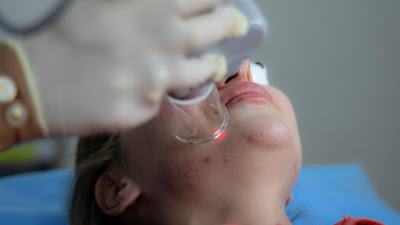Understanding the Different Types of Acne
Acne is a common skin condition that affects millions of people around the world. It occurs when hair follicles become clogged with oil and dead skin cells, leading to the development of pimples, blackheads, and whiteheads on the face, neck, chest, and back.
While many people may think of acne as a single condition, there are actually several different types of acne that can occur. Each type of acne has its own unique characteristics and treatment options, making it important to understand the differences between them in order to effectively manage this skin condition.
1. Whiteheads
Whiteheads, also known as closed comedones, are small, flesh-colored or white bumps that develop on the skin's surface. They occur when hair follicles become clogged with oil and dead skin cells, but the pore remains closed. This results in a small bump that does not have a visible opening.
Whiteheads are typically treated with topical retinoids, which work by increasing cell turnover and preventing the formation of new whiteheads. Salicylic acid is another effective treatment option for whiteheads, as it helps to exfoliate the skin and unclog pores.
2. Blackheads
Blackheads, also known as open comedones, are similar to whiteheads in that they are caused by clogged hair follicles. However, in the case of blackheads, the pore remains open, allowing air to enter and oxidize the oil and dead skin cells inside. This causes the material to turn black, giving blackheads their characteristic appearance.
Like whiteheads, blackheads can be treated with topical retinoids and salicylic acid. In addition, gentle exfoliation using a washcloth or facial scrub can help to remove blackheads and prevent their recurrence.
3. Papules
Papules are small, raised bumps that are typically red and inflamed. They occur when hair follicles become inflamed due to bacterial infection or irritation. Unlike whiteheads and blackheads, papules do not contain pus.
Treatment for papules typically involves the use of topical antibiotics or benzoyl peroxide, which help to reduce inflammation and kill bacteria. In some cases, oral antibiotics may be necessary to clear up more severe cases of papules.
4. Pustules
Pustules are similar to papules in that they are red and inflamed. However, unlike papules, pustules contain pus. They can be painful and may leave scars if not treated properly.
Topical treatments for pustules include benzoyl peroxide, retinoids, and antibiotics. In more severe cases, oral antibiotics or isotretinoin may be necessary to clear up the infection and prevent scarring.
5. Nodules
Nodules are large, painful bumps that form deep beneath the skin's surface. They are caused by a buildup of oil and dead skin cells that become trapped in the hair follicle. Nodules are difficult to treat and can take several weeks or even months to heal completely.
Treatment for nodules typically involves a combination of oral antibiotics, isotretinoin, and intralesional corticosteroid injections. In some cases, surgical drainage may be necessary to remove the contents of the nodule.
6. Cysts
Cysts are large, pus-filled lumps that occur deep beneath the skin's surface. They are caused by a severe bacterial infection and can be very painful. Cysts can also lead to scarring if not treated properly.
Treatment for cysts typically involves a combination of oral antibiotics, intralesional corticosteroid injections, and surgical drainage. In some cases, isotretinoin may also be prescribed to prevent future cysts from forming.
In conclusion, understanding the different types of acne is essential for effective treatment and prevention. While many of these types can be treated with topical medications, more severe cases may require a combination of oral medications and surgical procedures. If you are struggling with acne, it is important to consult with a dermatologist who can provide personalized treatment recommendations based on your individual needs.
